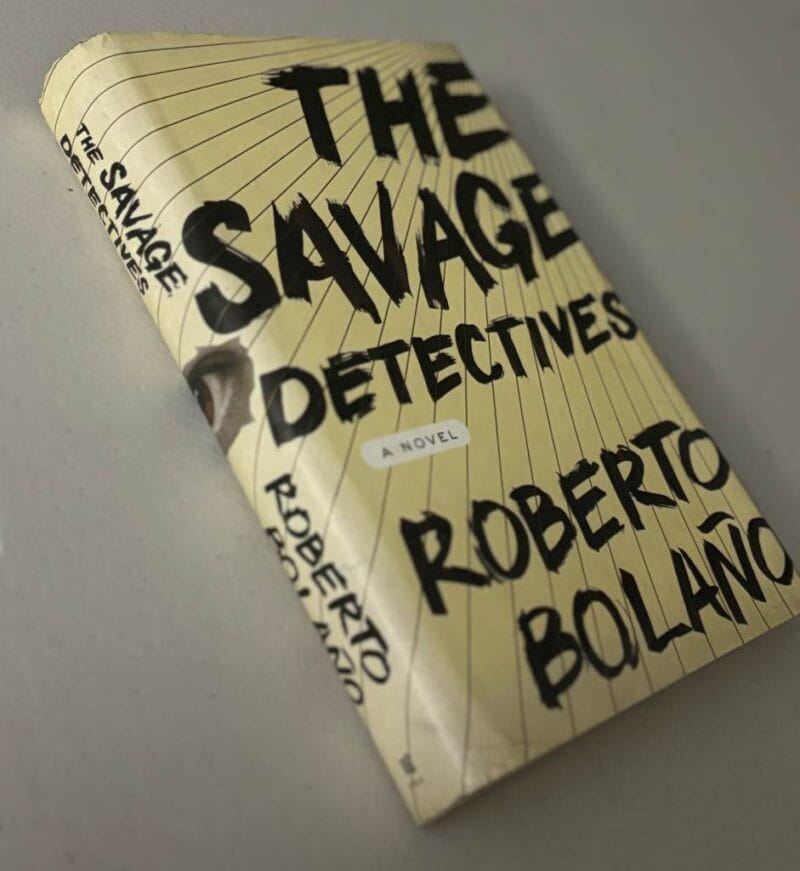Expedition, con job, and war are all threaded throughout Cryptonomicon (1999) by Neal Stephenson, which also includes plenty of information science. As it jumps between World War II and the World Wide Web, it is hyper-kinetic and full of energy, yet profound and says something about our future. For computer scientists with a knowledge in cryptanalysis, this book may hold particular interest. It can be a prime example of “mathematical fiction” which may interest only those within its fanatical fanbase.
Lawrence Waterhouse, a master cryptanalyst, and morphine-dependent marine Bobby Shaftoe, are our heroes from the 1940s. While serving in the United States Navy during World War II, Waterhouse is assigned to Detachment 2702, a top-secret unit with only a few members who are aware of its existence. Fast forward into the 1990s, in the present-day plot, Waterhouse’s crypto-hacker grandson, Randy, is working to establish a “data haven” in South East Asia for the benefit of the region’s citizens. Soon, a massive conspiracy involving a Nazi code that cannot be cracked is revealed. The crux of the story lies in cracking this code, in whether or not people achieve wealth and gain personal and digital freedom in the future.
To decipher the forces that have shaped this century, Neal Stephenson hacks into secret histories of nations and personal obsessions in cryptography and cryptanalysis. The fiction in the book contains some nuggets of truth, and it’s hard to tell where the realities end and the fantasy starts. The story jumps back and forth between World War II and the present day in a paranoid fashion.
Real mathematics is covered in depth, including Turing’s computability theorems and his modular arithmetic, as well as information theory. In the book, mathematics appears to be as interesting and useful as mathematicians would like everyone to see it. Reading this book, we learn how abstract mathematics helped the Allies win World War II by using it in “real world” application.
In this page-turning thriller, themes of power and war are explored throughout the twentieth century through the lens of data science and cryptography. It’s a classic hacker novel and a must-read for anyone interested in cybercrime. With more than 900 pages, Stephenson manages to weave together a cast of characters who appear to be unrelated and uninteresting on the surface, only to reveal to the reader how everything is interconnected. When it’s over, more information about thought-provoking concepts are learned, although a bit challenging to wade through at first given the book’s mathematical themes and hefty size.
Memorable Quotes
As a longtime bashful kidney sufferer, Randy is delighted to have stumbled upon the magic remedy: not to convince yourself that you are a dominating Alpha Male, but rather to be too lost in your thoughts to notice other people around you. Bashful kidney is your body’s way of telling you that you’re thinking too hard, that you need to get off the campus and go get a fucking job.
Page 212, Cryptonomicon by Neal Stephenson
If the first letter is R, and its Baudot code is 01011, and the second letter is F, and its code is 10111, then I can simply combine the two into a ten-digit binary number, 0101110111. And then I can take the next letter’s code and stick that onto the end and get a fifteen-digit number. And so on. The letters come in groups of five—that’s twenty-five binary digits per group. With six groups on each line of the page, that’s a hundred and fifty binary digits per line. And with twenty lines on the page, that’s three thousand binary digits. So each page of the message could be thought of not as a series of six hundred letters, but as an encoded representation of a single number with a magnitude of around two raised to the three thousandth power, which works out to around ten to the nine hundredth power.
Page 343, Cryptonomicon by Neal Stephenson
A seven-character-long message would give him two possibilities: it could be the first six or the last six characters. The upshot is that for a message intercept that is n characters long, the number of six-character-long segments is equal to (n – 5). In the case of a 105-character-long intercept, he will have 100 different possible locations for the word MANILA. Actually, a hundred and one: because it’s of course possible—even likely—that MANILA is not in there at all. But each of these 100 guesses has its own set of ramifications vis-à-vis all of the other characters in the message. What those ramifications are, exactly, depends on what assumptions Randy is making about the underlying algorithm.
Page 809, Cryptonomicon by Neal Stephenson
Further Reading
Don’t Trust Log Data! Lessons from the Cryptonomicon by Tyson Supasatit, ExtraHop
Neal Stephenson’s message in code by Jim McClellan, The Guardian
From ‘Cryptonomicon’: The Importance of Time-Tested Moral Frameworks by Richard Rabil, Jr., richardrabil.com
If We Told You Neal Stephenson Invented Bitcoin, Would You Be Surprised? by Peter Suderman, Reason Magazine




